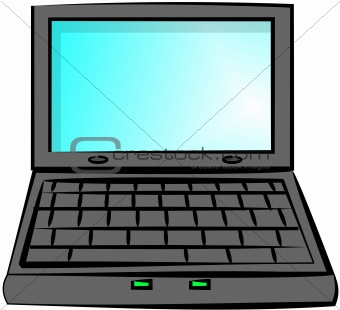An observation that I made in my centre was of one of the educators who had brought in her laptop computer to share to the children, as we had noticed the children’s increasing interest in the piece of equipment. The useful thing about the laptop computer is that it is accessible at any time, portable, convenient and suitable for bringing down to the children’s level. When the educator interacts with the children using the laptop computer, the children’s attention is immediately drawn to the machinery, as each child’s interest in the laptop is acknowledged with a turn to explore and investigate the countless education software programmes that the educator had installed. Each child examines each of the keys on the keyboards, as they further their exploration through fiddling with the mouse.
For myself as a growing educator, I want to help support the need for children to contribute to these learning experiences through allowing them the chance to explore, make decisions for themselves and feel that their contribution is valued by both educators and their peers (Ministry of Education, 1996). This could be done by enabling the children to learn to take turns on the computer, while during their turn, they are able to select any learning program that they want to do by using their decision-making skills, as well as having the comforts of enjoying their program in their own time and space.
 When a child is exploring and discovering the computer keyboard, they are not only experiencing it physically through their sensory-motor skills, but are also experiencing a visual representation of numbers and letters. In addition, through using laptop computers in children’s learning and development, I feel that this would help capture their focus on essential learning needs, allowing them to stay interested in their learning, at the same time building on their knowledge and learning of different materials and concepts of their educational needs. It is vital for us, as educators, to attain the necessary knowledge and skills that are required to enhance and promote the learning and development for children in technology, in this case, computer laptops. By doing this, we are helping “enhance the teaching and learning process”, (Tsantis, Bewick & Thornton, 2003, p.3) through having the proficiency to extend on the children’s interests and knowledge of computers laptops, as well as encouraging children to master it’s techniques, tools and methods efficiently.
When a child is exploring and discovering the computer keyboard, they are not only experiencing it physically through their sensory-motor skills, but are also experiencing a visual representation of numbers and letters. In addition, through using laptop computers in children’s learning and development, I feel that this would help capture their focus on essential learning needs, allowing them to stay interested in their learning, at the same time building on their knowledge and learning of different materials and concepts of their educational needs. It is vital for us, as educators, to attain the necessary knowledge and skills that are required to enhance and promote the learning and development for children in technology, in this case, computer laptops. By doing this, we are helping “enhance the teaching and learning process”, (Tsantis, Bewick & Thornton, 2003, p.3) through having the proficiency to extend on the children’s interests and knowledge of computers laptops, as well as encouraging children to master it’s techniques, tools and methods efficiently.I feel that in providing learning experiences that consist of using the laptop computers in my centre, the educators and I are accountable for presenting relevant learning programs and software for the children, also guiding and supporting their learning and usage of the equipment, in regards to their safety and time-management while using the laptop computers (Tsantis, Bewick & Thornton, 2003). Tsantis, Bewick & Thorton (2003) go on to suggest that this is a vital necessity for educators, as selecting appropriate software can have a major effect on the active learning and development of children.
Reference List:
Google image. Image of computer keyboard with numbers and letters. Retrieved from http://alignedleft.com/blog/wp-content/uploads/2008/06/macbook-keyboard-by-jason-michael1.jpg
Google image. Image of cartoon laptop computer. Retrieved from http://images.crestock.com/30000-39999/38316-xs.jpg
Google image. Image of child with laptop. Retrieved from http://www.niea-online.org/files/NIEA/girl_on_laptop.jpg
Ministry of Education. (1996). Te Whaariki: He Whaariki Matauranga mo nga Mokopuna o Aotearoa: Early Childhood Curriculum (pp. 84-90). Wellington, New Zealand: Learning Media Limited.
Smorti, S. (1999). Technology in Early Childhood. Early Education, 19, 5-10.
Tsantis, L., Bewick, C., & Thornton, S. (2003). Examining some common myths about computers in the early years. Young Children on the Web, November 2003, 1-9.









